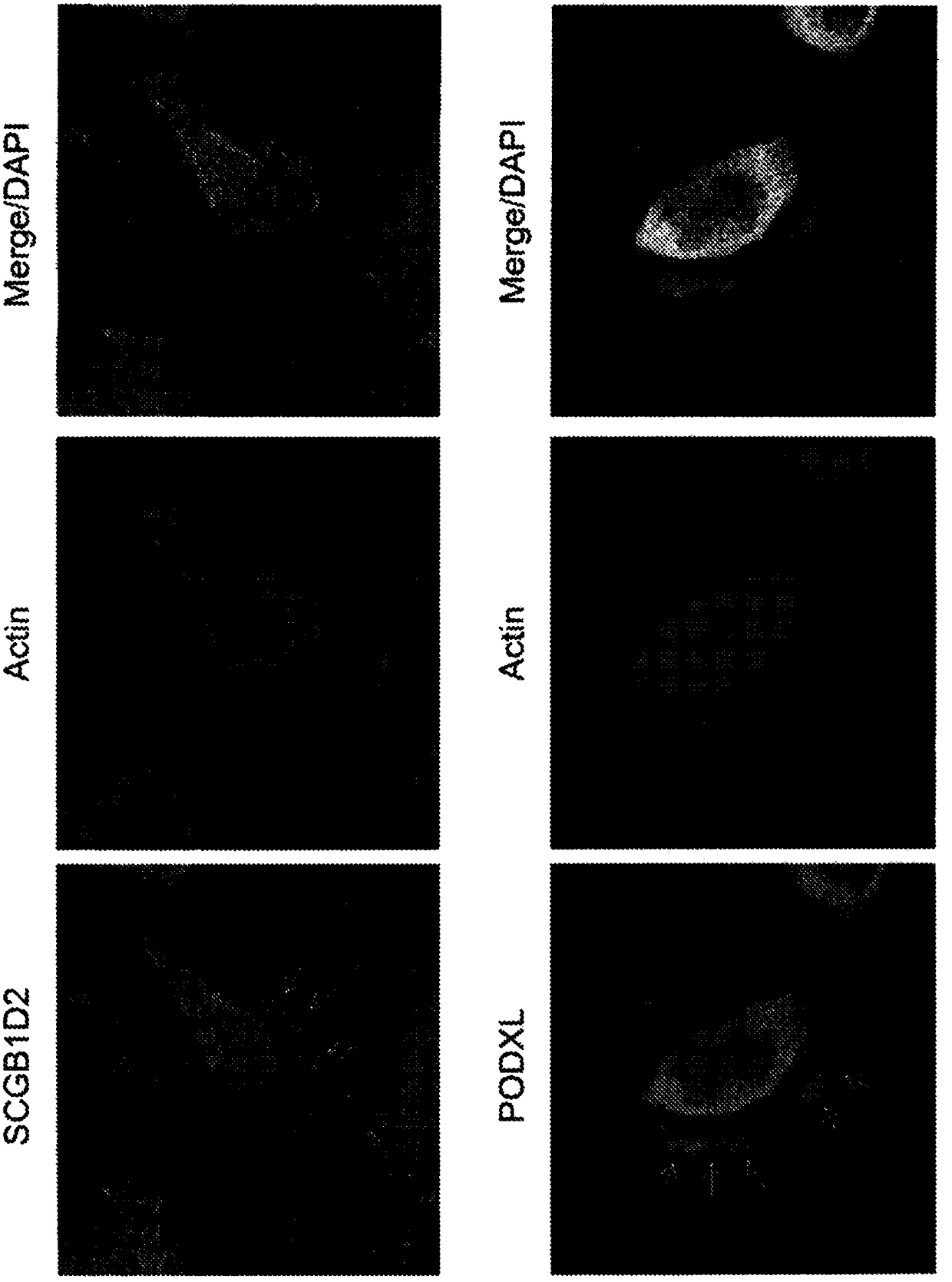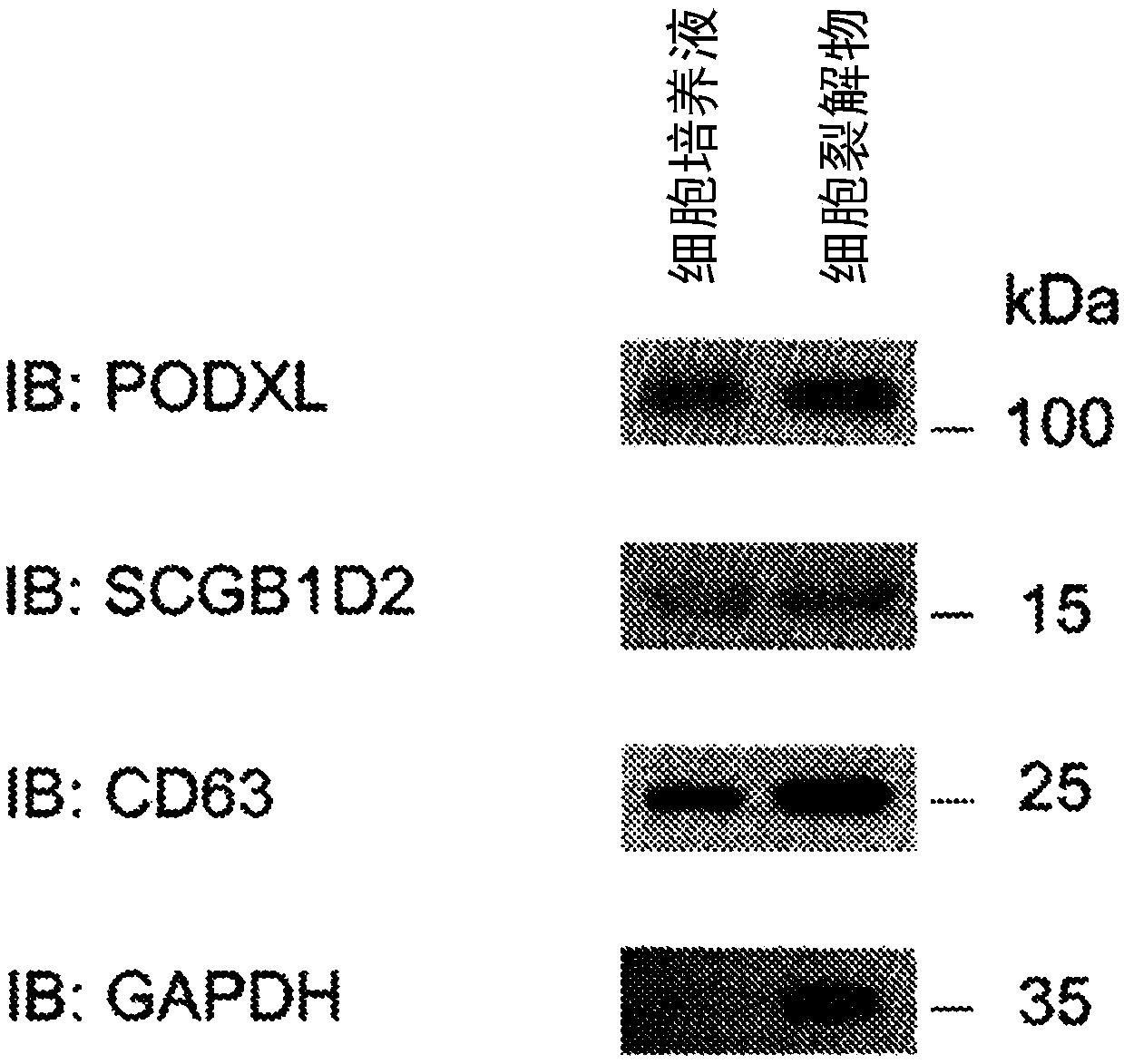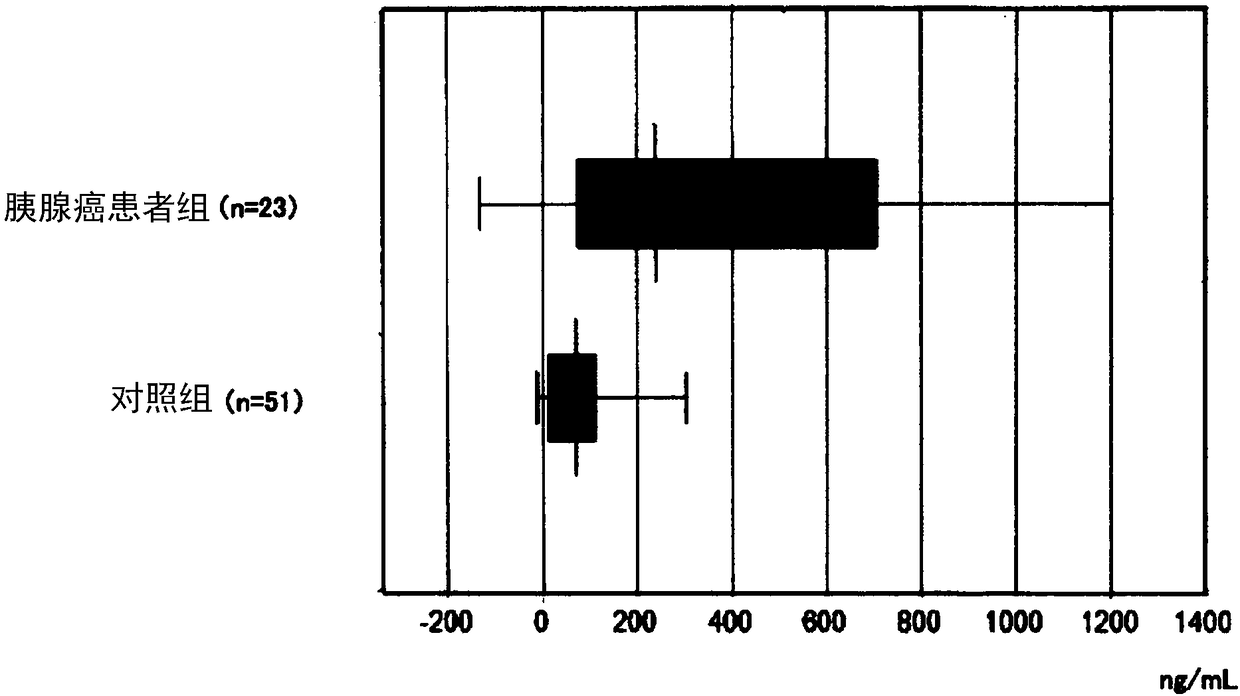Marker for pancreatic cancer and intraductal papillary mucinous tumors
A papillary, mucinous technique for evaluating the metastasis of pancreatic cancer cells, which can solve the problems of low sensitivity and poor usefulness of CA19-9
- Summary
- Abstract
- Description
- Claims
- Application Information
AI Technical Summary
Problems solved by technology
Method used
Image
Examples
Embodiment 1
[0105] Example 1: Identification of pancreatic cancer cell proteins that can be used as pancreatic cancer markers
[0106] The inventors of the present invention conducted studies for the purpose of elucidating the mechanism of invasion and metastasis of pancreatic cancer cells, and found that insulin-like growth factor 2 mRNA-binding protein 3 (IGF2BP3) binds to a specific mRNA, protruding from the cell membrane in the lamellipodia ( lamellipodia) are involved in the local translation of these mRNAs (reported in Oncotarget, 5, pp. 6832-45 (2014)). Among these mRNAs, mRNAs of SCGB1D2 and PODXL were also included (unpublished). Here, functional analysis of SCGB1D2 and PODXL was performed.
[0107] First, in order to investigate whether SCGB1D2 and PODXL, which are locally translated into proteins, exist locally in the lamellipodia of pancreatic cancer cells, immunocytostaining was performed using the human pancreatic cancer cell line S2-013. The result is expressed in figure...
Embodiment 2
[0110] Example 2: Diagnostic Test
[0111] (1) Selection of subjects
[0112] Based on 23 cases of pancreatic cancer (1 case of Stage I pancreatic cancer, 5 cases of Stage III pancreatic cancer, 17 cases of Stage IV advanced pancreatic cancer) and benign tumors of IPMN (intraductal papillary papillary tumor) diagnosed in the Department of Gastroenterology, Kochi University Medical Center Affiliated Hospital Mucinous tumor) cases were carried out on 11 cases. IPMN cases are for patients with no history of cancer and no surgery. As a control, a total of 51 cases of chronic hepatitis, colorectal polyps, and gastric polyps without pancreatic diseases were selected at the Department of Gastroenterology, Affiliated Hospital of Kochi University School of Medicine. The inventors of the present invention and two Japanese Gastroenterological Society supervisors who diagnose and treat pancreatitis use an explanatory document approved by the Clinical Trial Review Committee of Kochi Univ...
PUM
 Login to View More
Login to View More Abstract
Description
Claims
Application Information
 Login to View More
Login to View More - R&D
- Intellectual Property
- Life Sciences
- Materials
- Tech Scout
- Unparalleled Data Quality
- Higher Quality Content
- 60% Fewer Hallucinations
Browse by: Latest US Patents, China's latest patents, Technical Efficacy Thesaurus, Application Domain, Technology Topic, Popular Technical Reports.
© 2025 PatSnap. All rights reserved.Legal|Privacy policy|Modern Slavery Act Transparency Statement|Sitemap|About US| Contact US: help@patsnap.com



